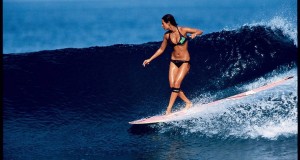
Pine Tree Tops by Gary Snyder relates to nature, the senses, and the ecosystem. Examples are the images of blue night, frost haze, and moon’s glow in the first stanza. The second gives a combination of symbolic colors as the poem increases in intensity; for example: bend snow blue, frost, and starlight. The third continues with an abrupt disturbance of nature with the interference of a human boots, which generate prints with rabbit and deer tracks. These perceptions also appeal to the senses and bring Christmas to mind. Additionally, the short lines impact the poetic flow thus making the poem divisible. Finally, the poem ends with a rhetorical point for interpretation.
First, the poem appeals to the senses with sensory details in various ways such as, the seeing of colors and hearing the creaking of boots. It also allows for the smelling of pine trees and feeling the dampness of frost against the skin. Finally, and more likely than not, the imagery brings to focus the tasting of venison from the fresh prize of a deer hunting trip in the woods.
Next, this poem relates to Christmas in several ways. The most significant is a person searching for a pine tree to use as a Christmas tree. Being outside in the woods makes this imagery of disturbing the ecosystem clear. The pine tree tops relate to the top of a Christmas tree; a pinnacle on the top with starlight frost down the sides.
Third, the topography of short lines moves the poem faster while reading. Unlike other poems written with long, metered lines, this one is short, ends quickly, and moves to the corresponding line more hastily. However, this could be a hindrance to one who races through the poem, unlike a poet who is cautious and more observant while reading with a connotative interpretation of each word instead of just a denotative one.
The poem is written in three stanzas of three lines each. One could divide the poem into three unrhymed stanzas of haiku poetry. The traditional haiku has seventeen syllables; however, a contemporary haiku has less than seventeen syllables as the three haikus in this poem. Additionally, the traditional haiku poem has a kigo word which relates to nature or seasons of the year. Furthermore, when the nine lines are divided into three lines each, one will find a seasonal word of nature in each of the three haikus. For example, in the first haiku there is frost haze. The second haiku with three lines has frost; starlight. The third haiku has rabbit and deer tracks which become obvious in the snow at winter time.
Finally, the poem ends with a rhetorical question in the form of a declarative statement regarding the reader’s knowledge. This leaves the poem open for interpretation to a reader. Obviously, a clear cut answer does not exist in this scenario, thus making the poem very interesting to read and contemplate regarding the intent of the author.

Source by Joseph Spence, Sr.
 Vitamin Agent The Health & Naturalistic Source
Vitamin Agent The Health & Naturalistic Source


